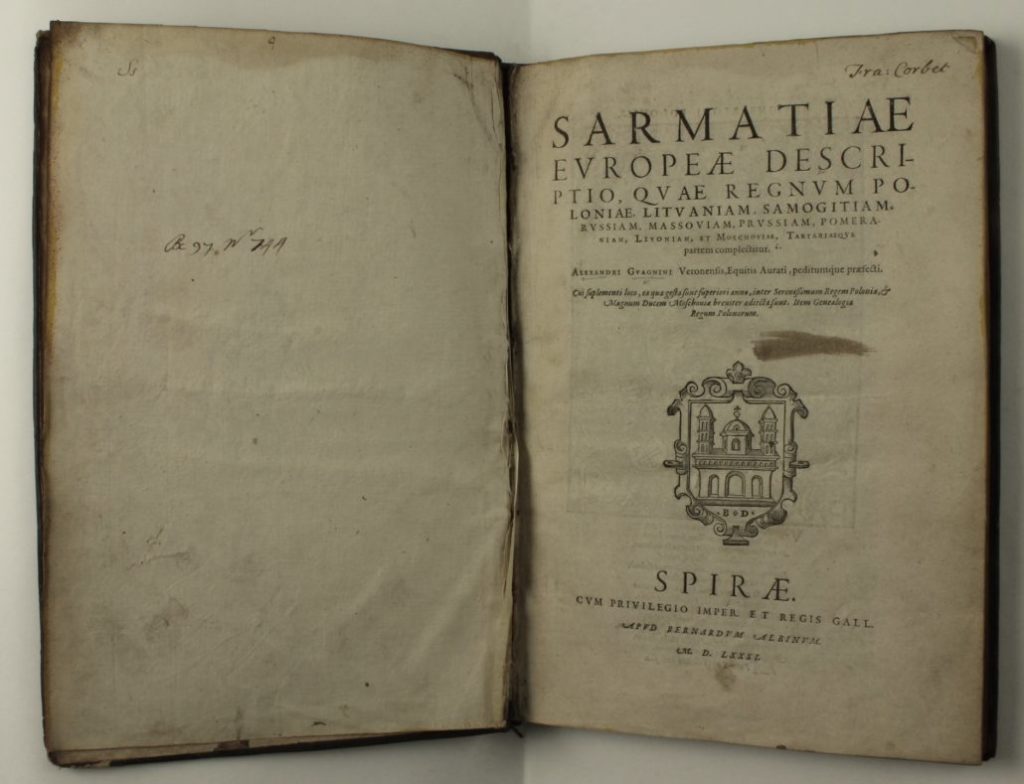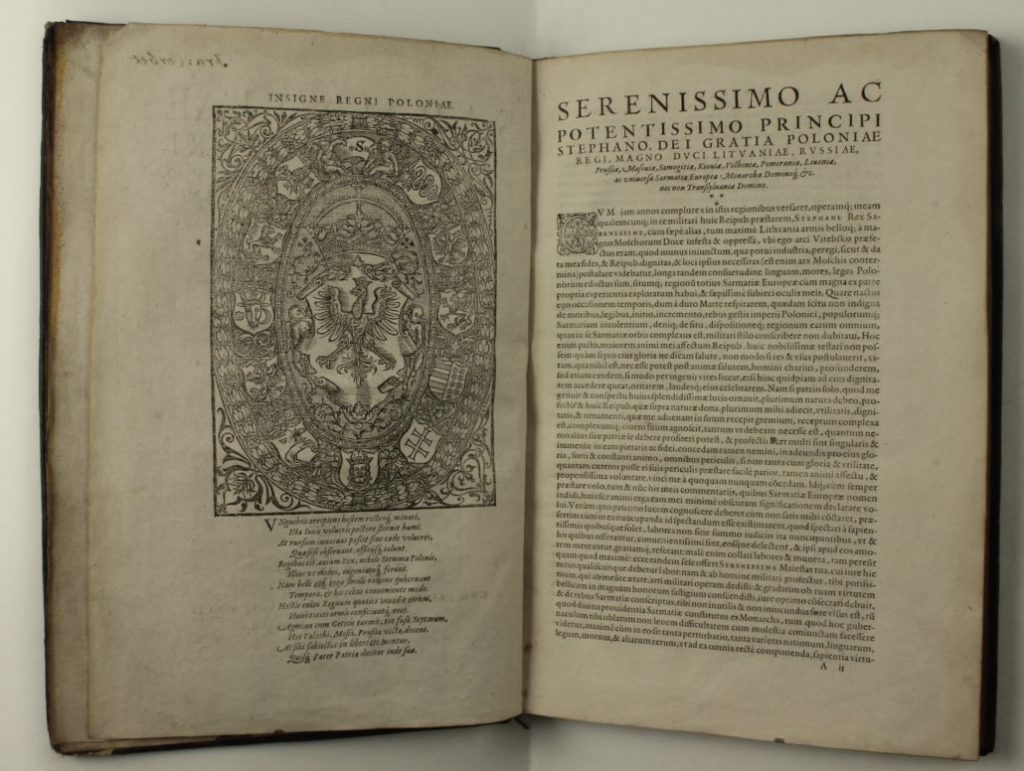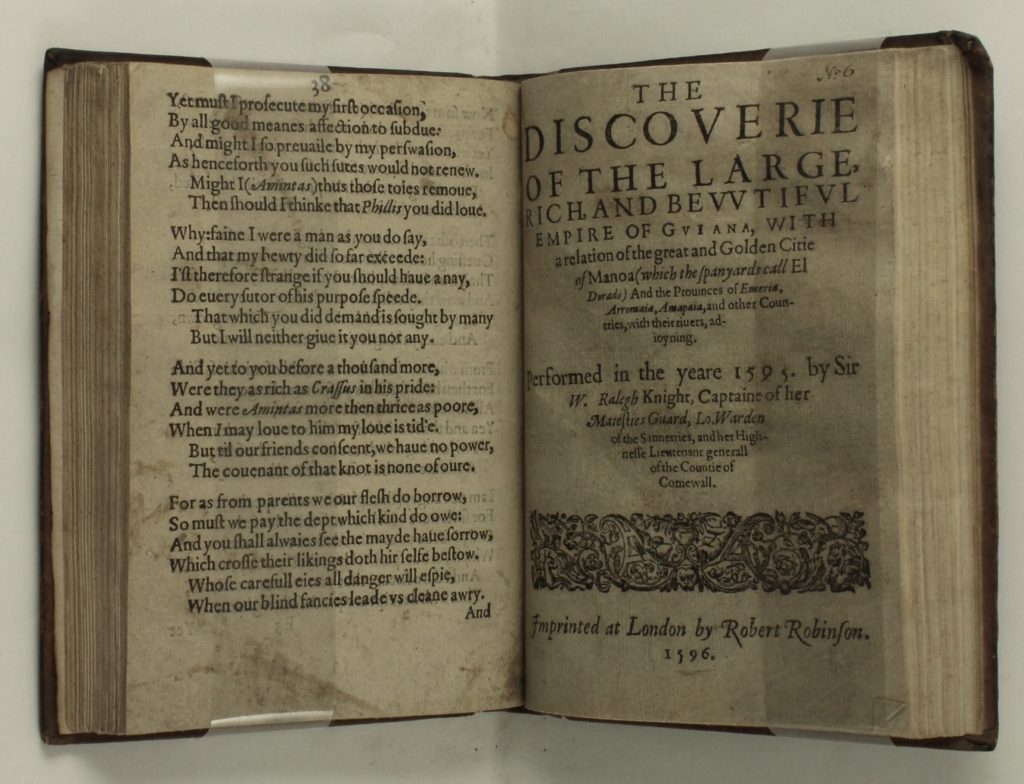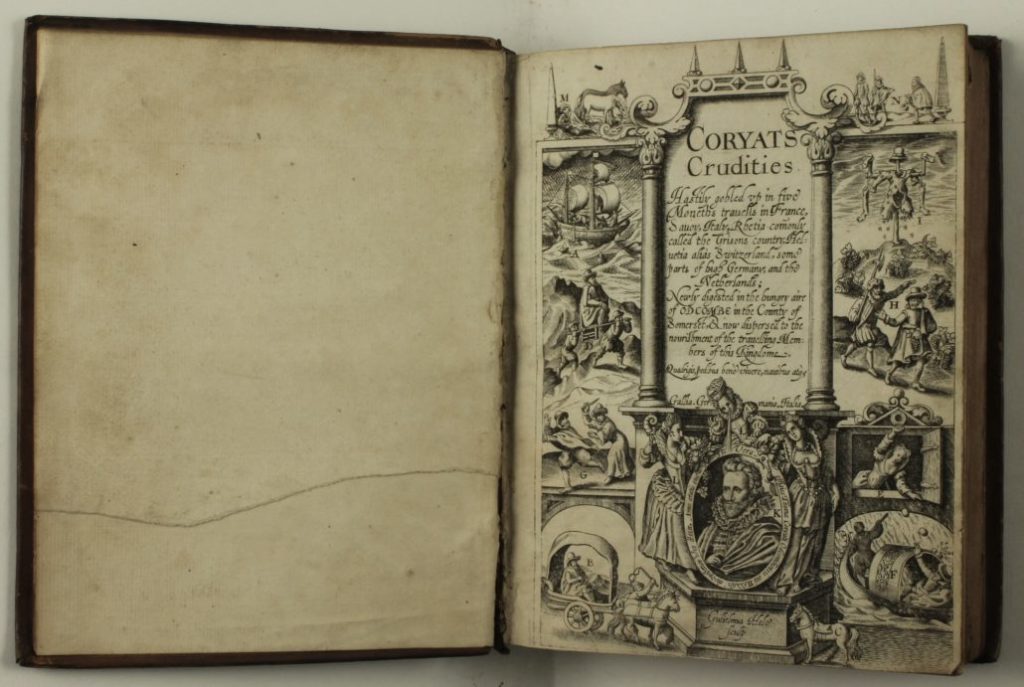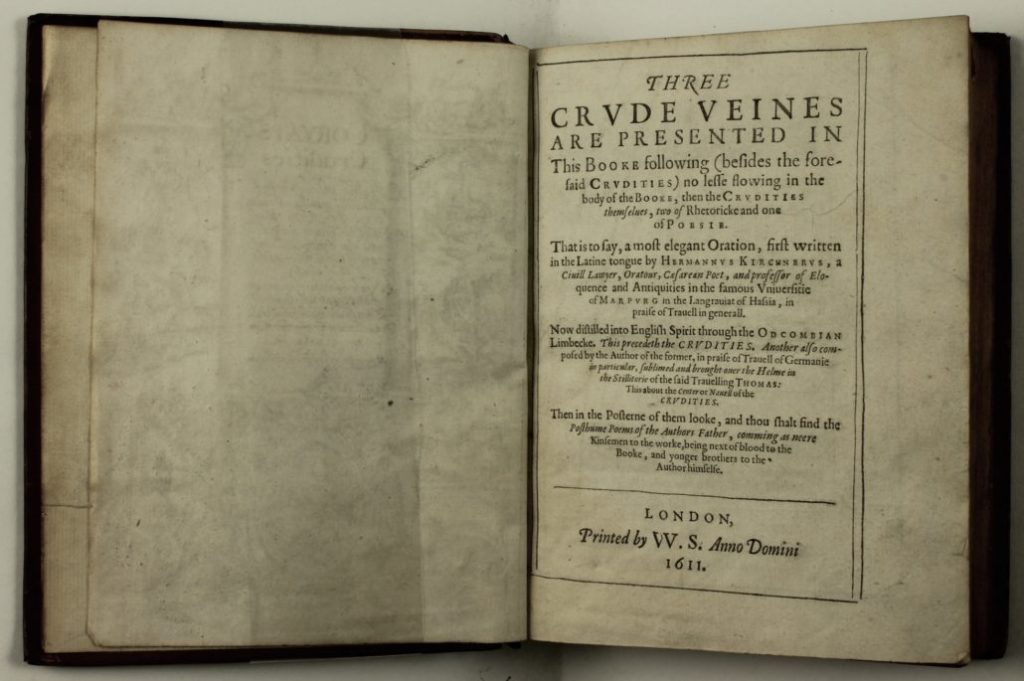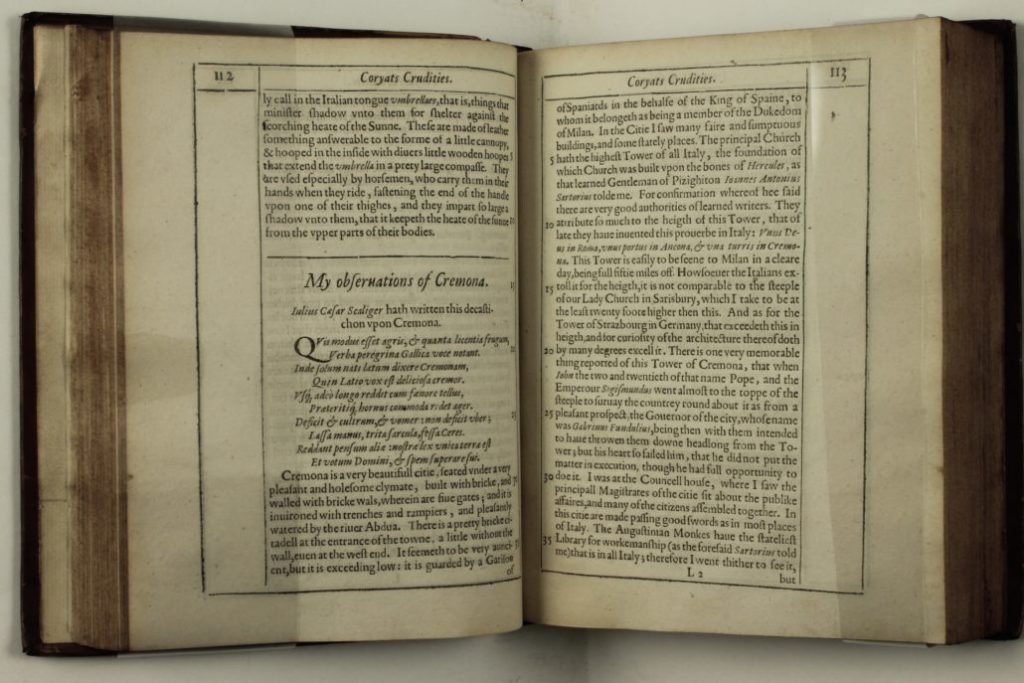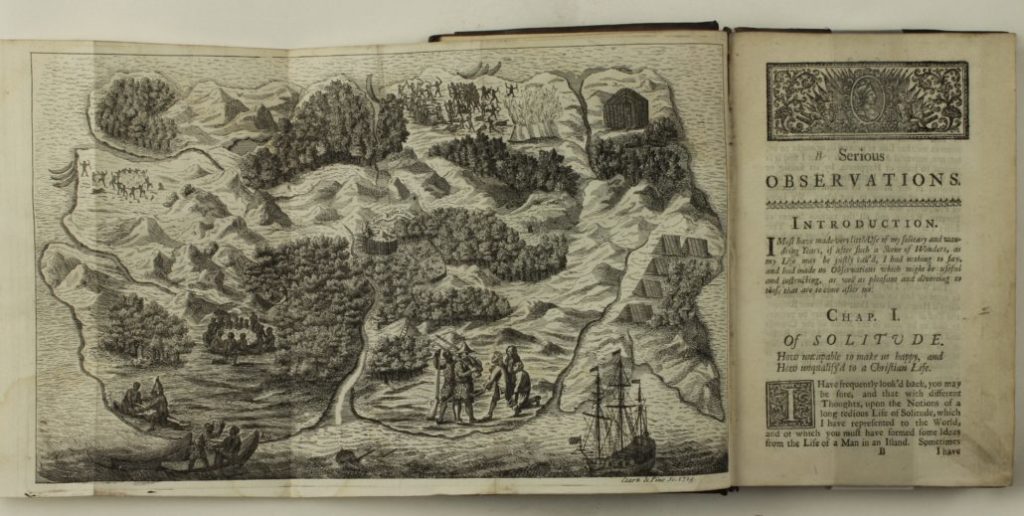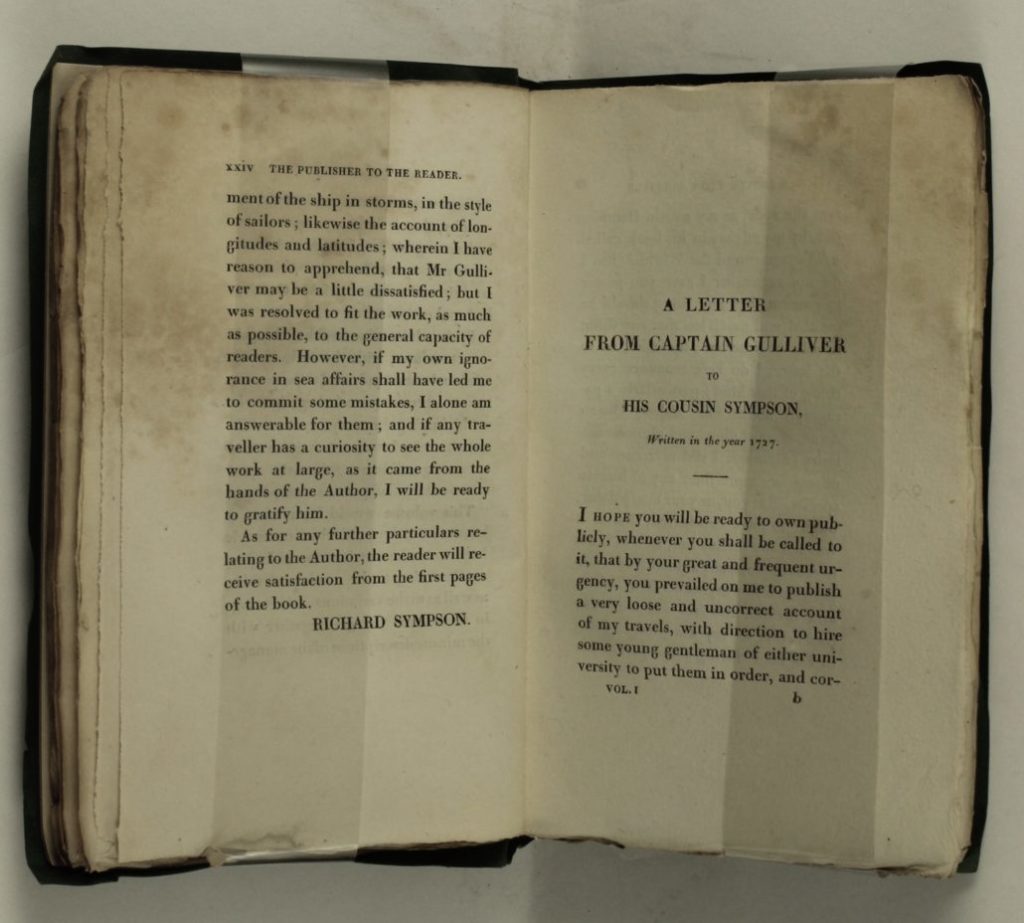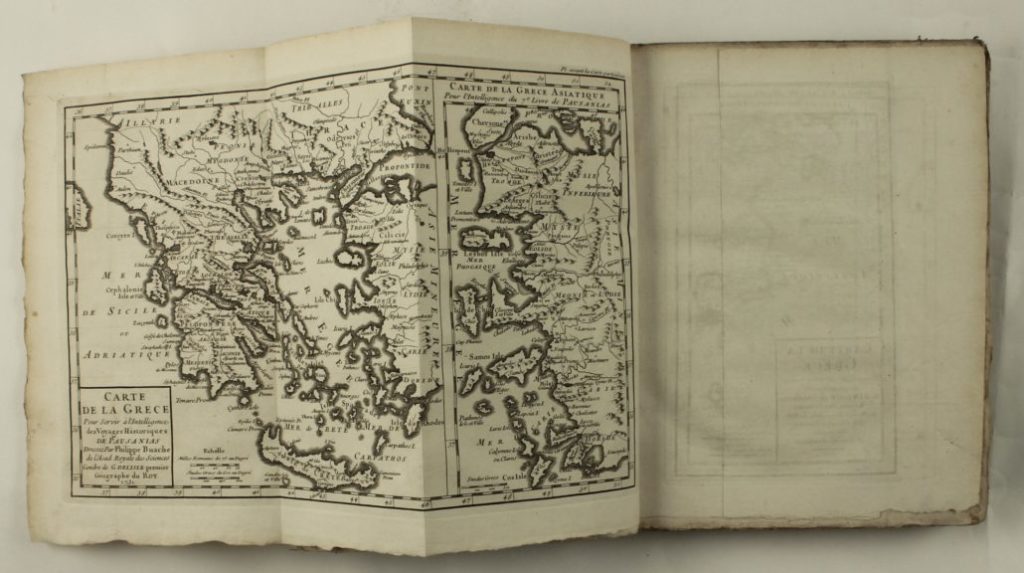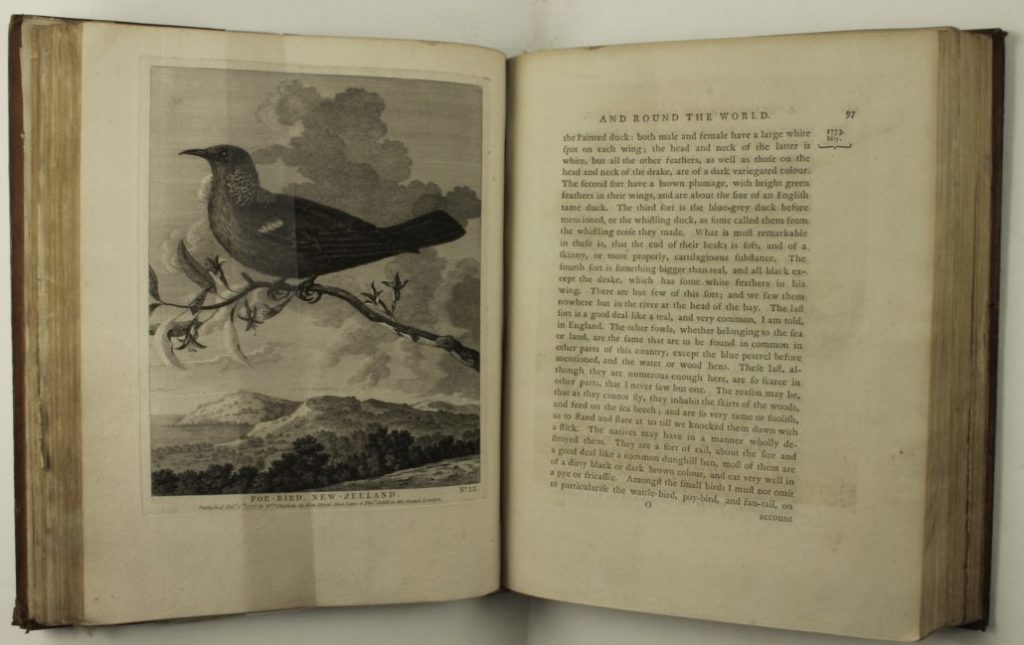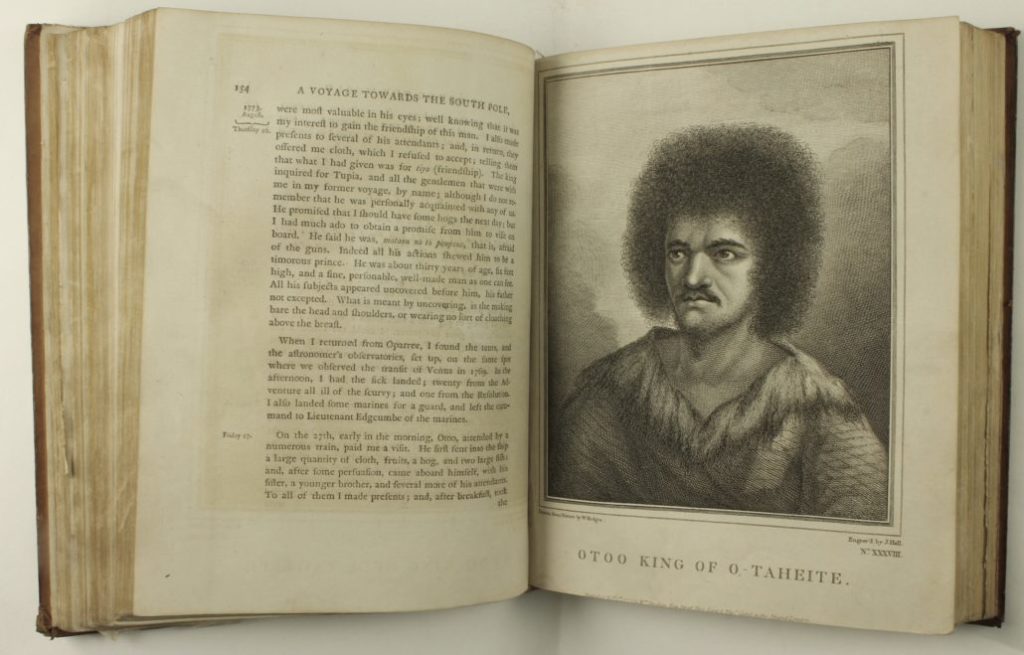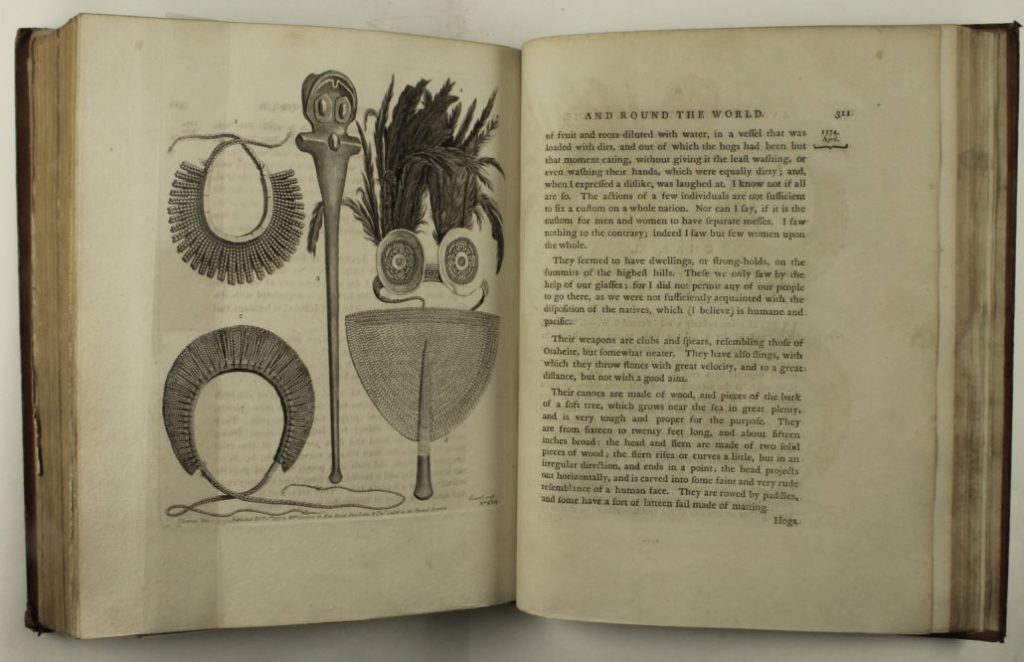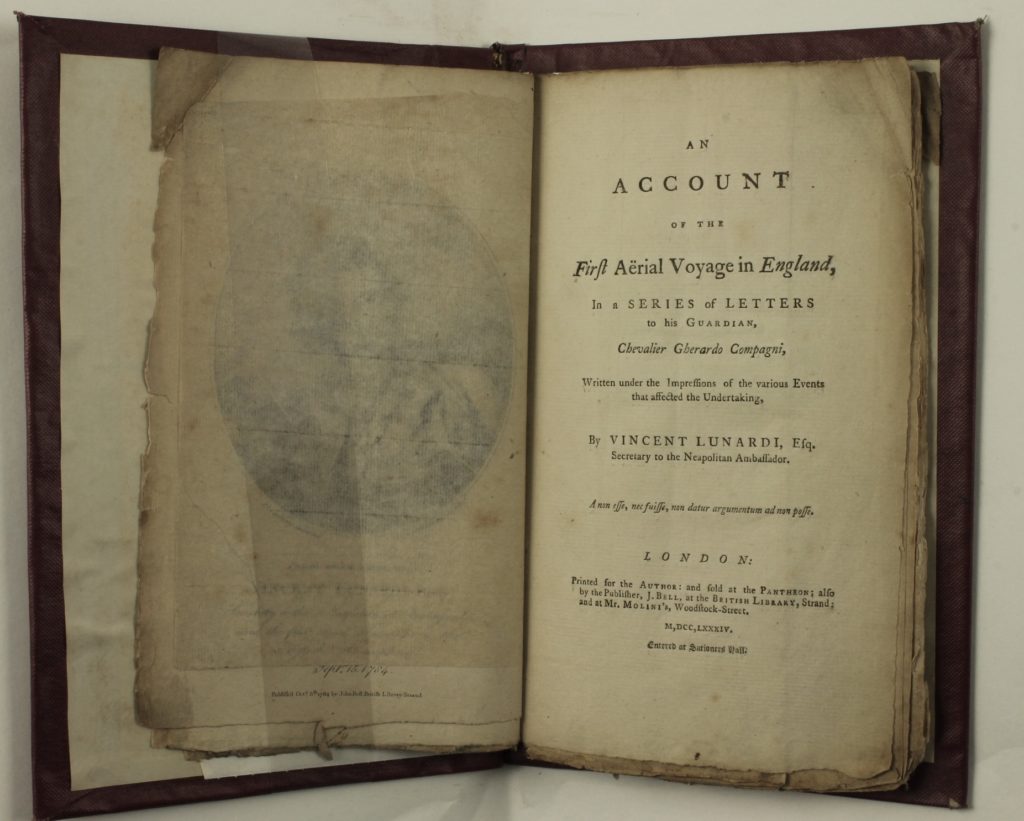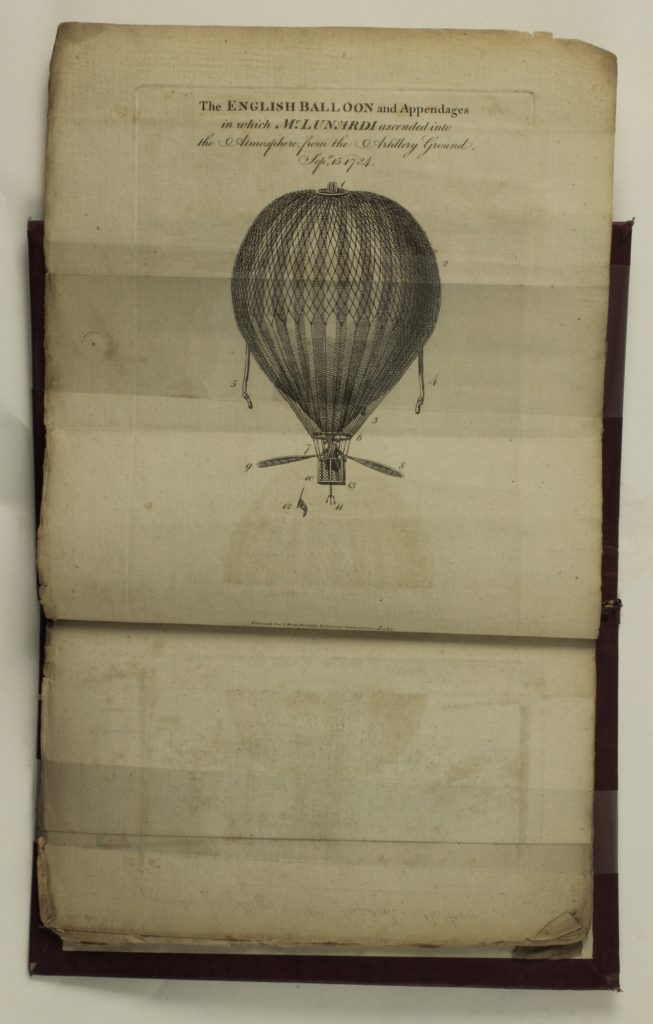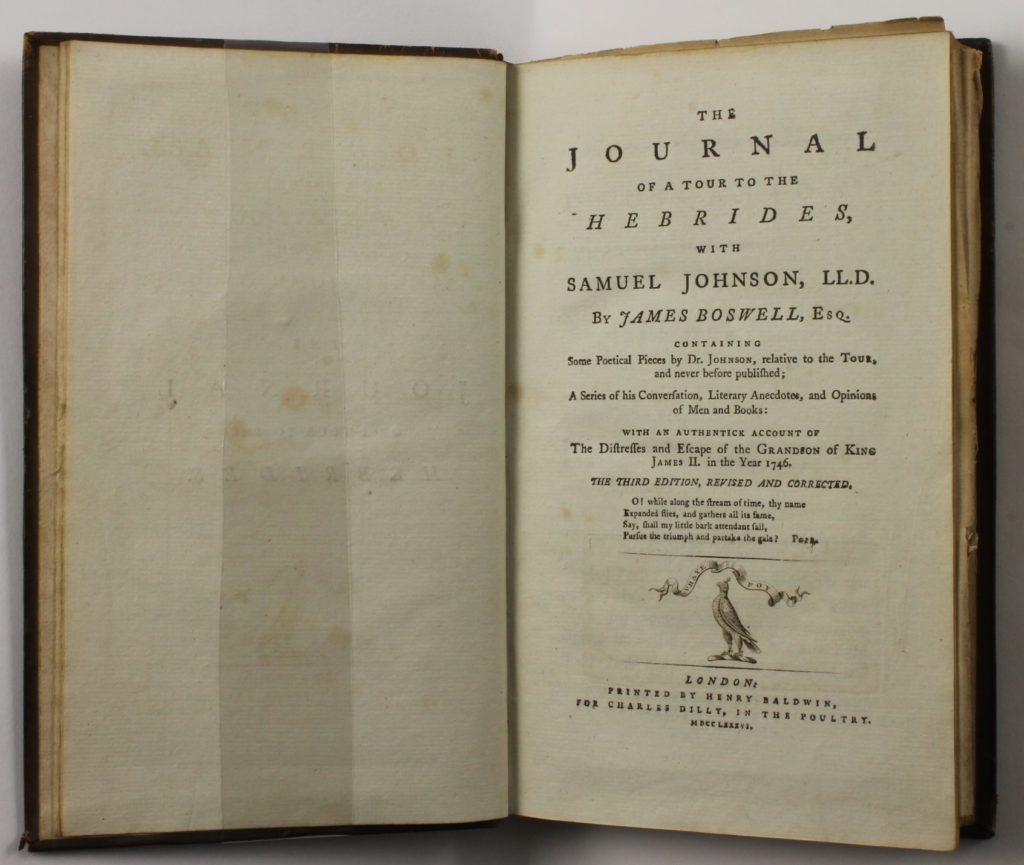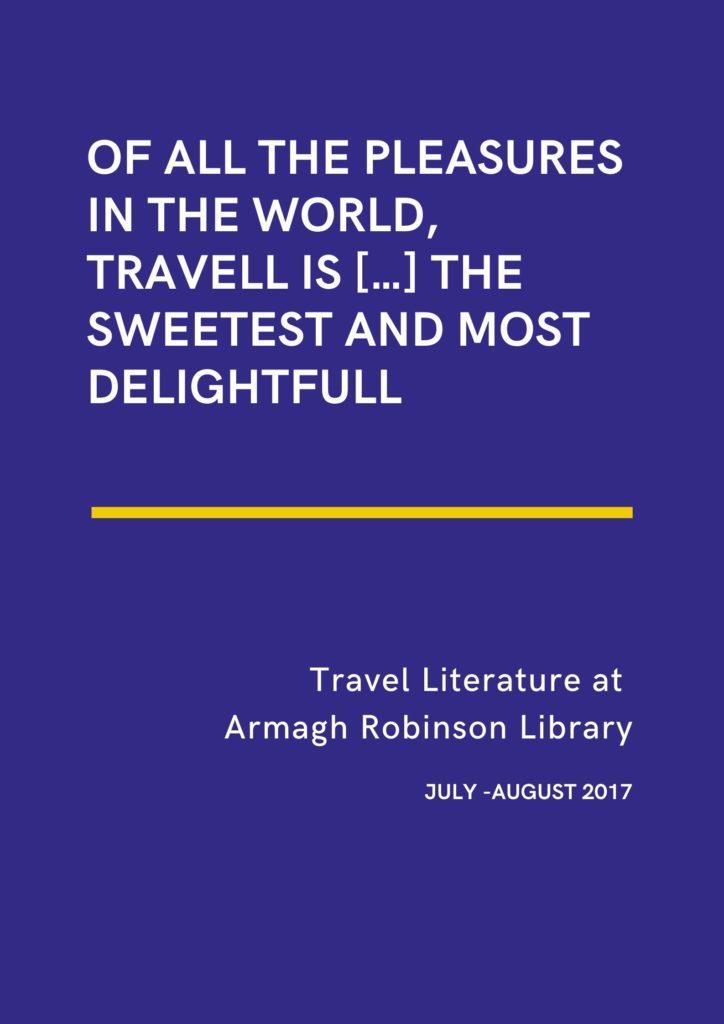
This book exhibition shows different examples of travel literature from the Library collection.
In this day and age it is easy to hop on a plane to travel almost anywhere in the world. It is hard to imagine that there was a time when the only place most people visited was the next town!
In the past travel was very much an activity for the rich. Anyone who lacked the money could be an armchair traveller. They could read a travel book and be transported to distant lands.
This exhibition takes you on a journey past adventurous travel books, practical guidebooks and reflections on cultures and peoples.
It highlights books showing places, cultures and countries. Wonderful novels find their place where the main characters travel to exotic and fanciful countries. The books on display catered for both the wealthy traveller and those who had to stay at home.
Sarmataie Europeae Descriptio, quae regnum Poloniae, Lituaniam, Samogitiam, Russiam, Massoviam, Prussiam, Pomeranium, Livoniam, et Moschoviae Tartariaeque partem complectuir. [...] Alessandro Guagnini 1581 P001356859
This Latin travel memoir of Eastern European countries was the first to show portraits of Lithuanian dukes. Although the portraits were fictional, many future images of the dukes were based on these.
The author, Alessandro Guagnini, was accused of stealing the manuscript from his subordinate Maciej Strykowski. Even though the Polish King agreed with this claim in 1580, the book was still printed under Guagnini’s name.
The Discovery of the Large, Rich and Beautiful Empire of Guiana Walter Raleigh 1596 P001444391
Sir Walter Raleigh travelled to South America in 1594 in the hope of finding the City of Gold or El Dorado. He also wanted to try to re-establish the power of the English in the region.
The expedition was not as successful as Raleigh had hoped.
Hardly any gold was found, but that did not stop him from writing this enthusiastic account of his journey. It is thought though to have been highly exaggerated.
The book contributed to the legend of El Dorado.
Coryats crudities : hastily gobled up in five moneths travells in France, Savoy, Italy, Rhetia com̃only called the Grisons country, Helvetia alias Switzerland, some parts of high Germany, and the Netherlands[…] Thomas Coryat 1611 P001383899
This work by Thomas Coryat vividly describes his travels on foot through Europe between 1608 and 1611.
Coryat records his first encounter with the use of forks by the Italians. It was a custom he decided to adopt himself. He is therefor credited with introducing the use of a fork to England. On the page on display he writes that this led to his Latin nickname Furcifer (fork-bearer)!
being once quipped for that frequent using of my forke, by a certain learned Gentleman, […], who in his merry humour doubted not to call me at table ‘Furcifer,’ only for using a forke at feeding, but for no other cause.
Coryat made many other interesting discoveries, including the custom of Italians shielding themselves from the sun with umbrellas (‘little shade’). He was the first to use the word umbrella in the English language.
Serious Reflections During the Life and Surprising Adventures of Robinson Crusoe; With His Vision of an Angelick[sic] World. Daniel Defoe 1720 P001427632
This novel relates the fictitious life of Robinson Crusoe as a castaway for 28 years on an island near Trinidad. The book gave the literary genre of desert island stories or castaway stories the name Robinsonade. This book is Part 3 of the Robinson Crusoe trilogy.
Crusoe was named as the author on the title page of early editions. This led many to believe that the book was an autobiography rather than a work of fiction.
It was, however, written by Daniel Defoe, an English writer, journalist, pamphleteer and spy. Robinson Crusoe is his most successful book.
Gulliver's Travels: Into Several Remote Nations Of The World Jonathan Swift 1826 P002472762
This work by Swift is not only a satire of human nature, but also of the literary genre of travellers’ tales.
Swift himself claimed that he wrote it
[…] to vex the world rather than to divert it
The first edition was published six years after Robinson Crusoe. Many scholars thought that Gulliver’s Travels was to contradict Defoe’s theory that the individual precedes society.
Like Crusoe, Gulliver feels the urge to travel, with both characters becoming stranded and facing difficulties which emerge during their respective journeys.
Gulliver’s Travels was also originally published anonymously, with Gulliver being presented as the author of the work.
Pausanias, ou, Voyage historique de la Grèce Pausanias 1731 P001492043
Pausanias was a Greek traveller and geographer from the 2nd century AD. He became famous for this description of ancient Greece at the time of the Roman Emperors Hadrian, Antonius Pius and Marcus Aurelius.
The text is divided into ten books, each dedicated to a specific geographic area. Pausanias focuses particularly on religious art and architecture.
The text in Armagh Robinson Library is an 18th century French translation.
Itinerary of Journey through the Counties of Dublin, Meath & Louth [The Isaac Butler Journal] Isaac Butler 1744 P00180987x
Isaac Butler was employed by the Physico-Historical Society of Ireland as a botanist to report on the natural history of several Irish counties.
Butler kept this journal during his travels around Ireland, and indeed recorded its natural landscape.
In addition, he made notes on the daily life of 18th century Dubliners and country people, water quality, monuments and other structures.
A voyage towards the South Pole, and round the world : performed in His Majesty's ships the Resolution and Adventure, in the years 1772, 1773, 1774, and 1775 James Cook 1777 P001148474
In the late 18th century, explorers undertook voyages to identify unexplored lands and shipping routes for trade, and to make scientific discoveries. Before the invention of photography, explorers relied on drawings to supply all this information.
Explorer and navigator Captain James Cook sailed to the Antarctic between 1772 and 1775.
One of his crew members was a young artist called William Hodges. Hodges made drawings of portraits, landscapes and local cultures. On his return the drawings were made into engravings for use in this book.
It also contains maps and charts, based on the navigational information acquired during the voyage.
First Aerial Voyage in England Vincent Lunardi 1784 P001406570
In 1784 Vincent Lunardi, a pioneering Italian aeronaut, demonstrated the recently invented hydrogen balloon at the Artillery Ground in London.
The launch of the balloon did not go without a hitch. A 200,000-strong crowd had gathered to watch the launch.
As the crowd grew more and more impatient, Lunardi decided to launch the balloon without his colleague and without a fully inflated bag. He did, however, travel with a cat, a dog and a caged pigeon!
The 24-mile flight made Lunardi famous overnight. The balloon inspired ladies’ fashions, such as ‘Lunardi’ skirts and bonnets. The balloon was later displayed at the Pantheon in Oxford Street.
The Journal of a Tour to the Hebrides : with Samuel Johnson, LL. D. By James Boswell, Esq. containing Some Poetical Pieces by Dr. Johnson, relative to the Tour, and never before published James Boswell 1786 P001474290
This journal by James Boswell documents his three-month tour of the highlands and western islands of Scotland. The journal was based on a diary which Boswell kept during these travels, and it proved to be very popular.
Boswell travelled together with Samuel Johnson. Johnson published his own account of the journey, but from a very different perspective.
Johnson focuses on Scotland, while Boswell records Johnson’s reactions to the people, landscapes, and customs, showing Johnson’s prejudice against Scotland!
In the middle of the left page, Boswell states that Johnson came back from the journey with a different perspective:
To Scotland however he ventured; and he returned from it in great good humour, with his prejudices much lessened, and with grateful feelings of the hospitality with which he was treated

